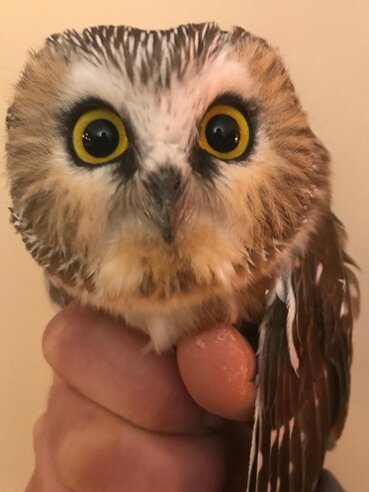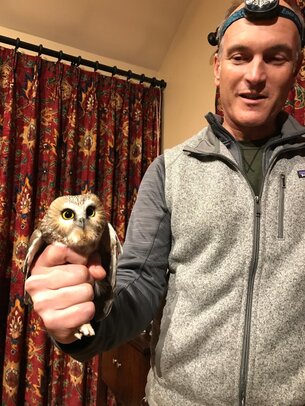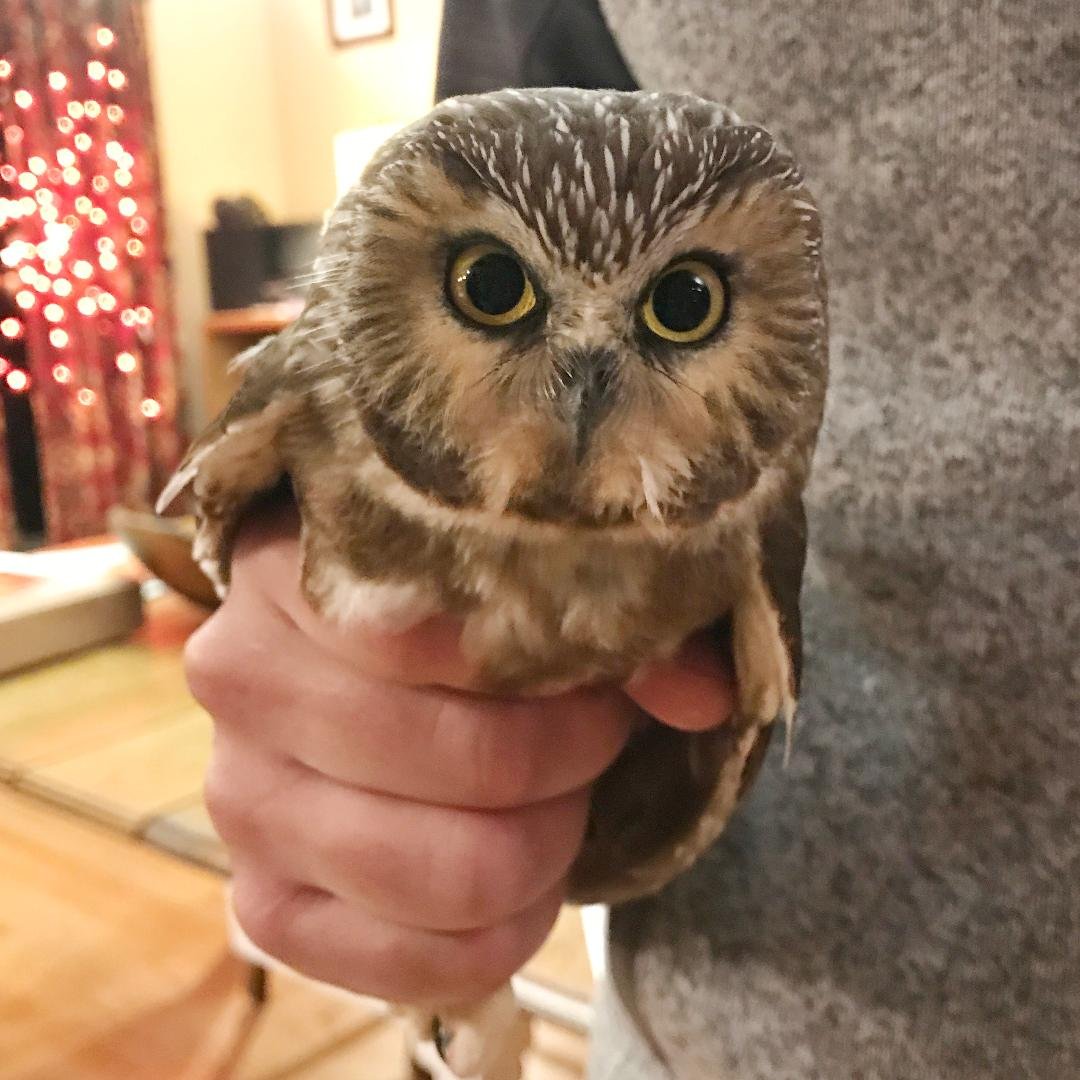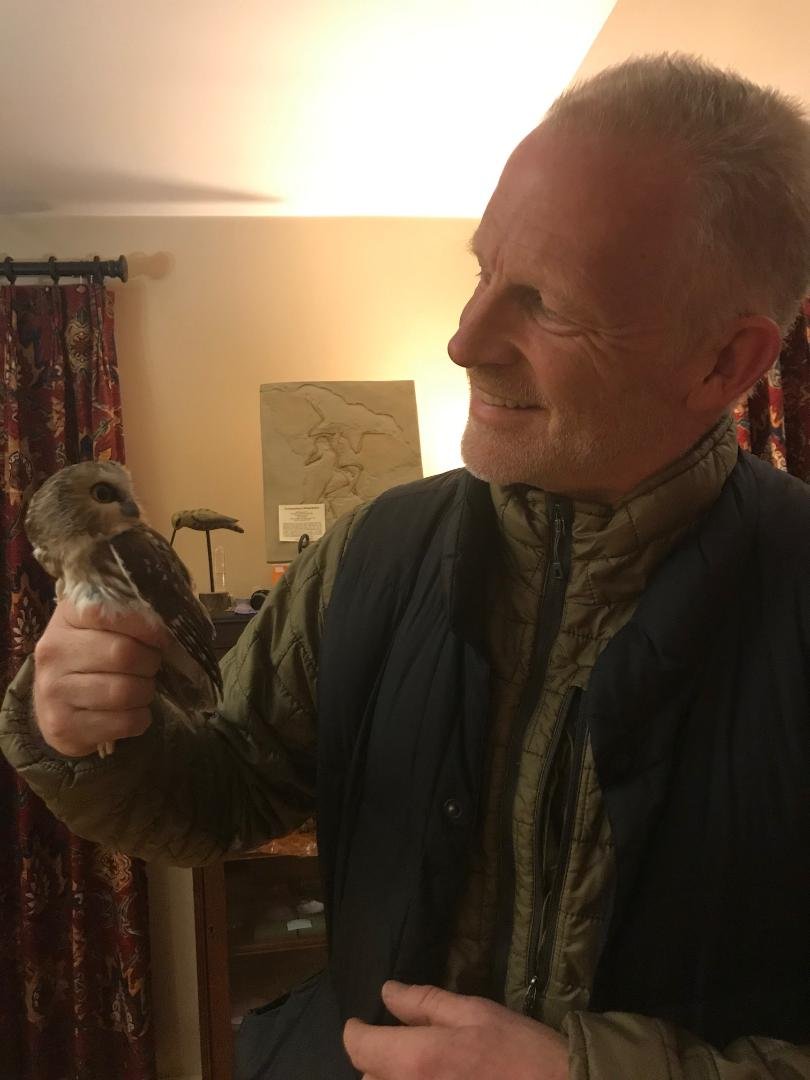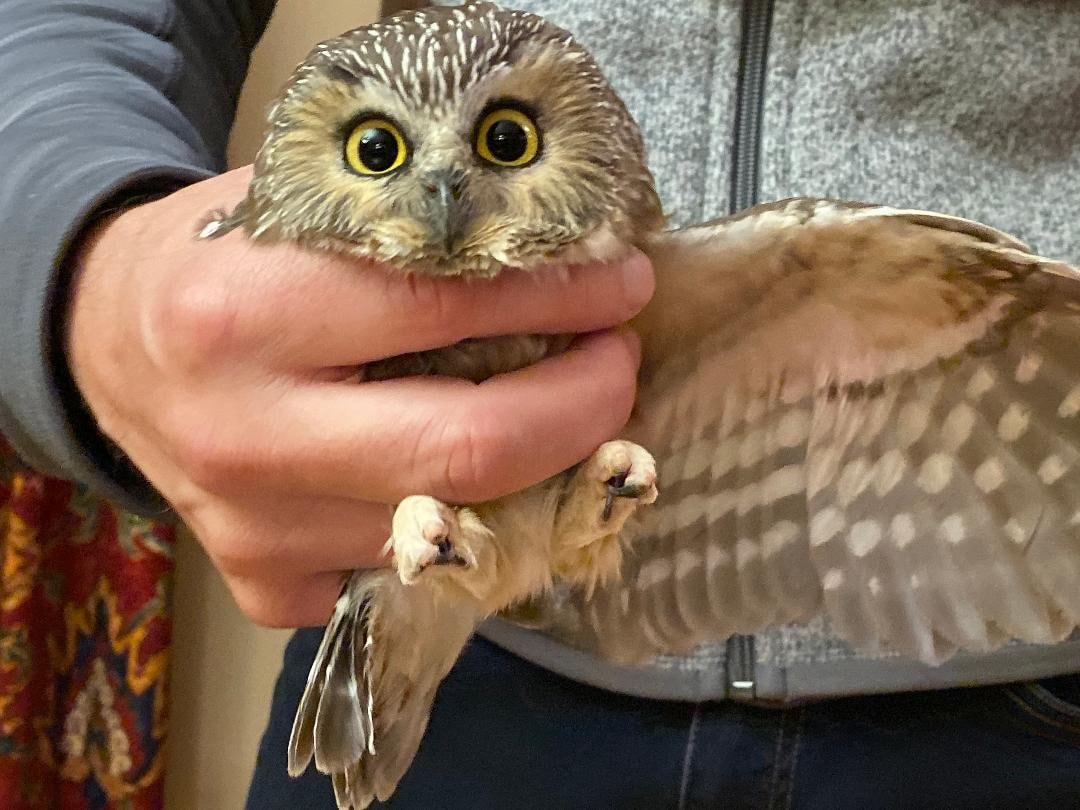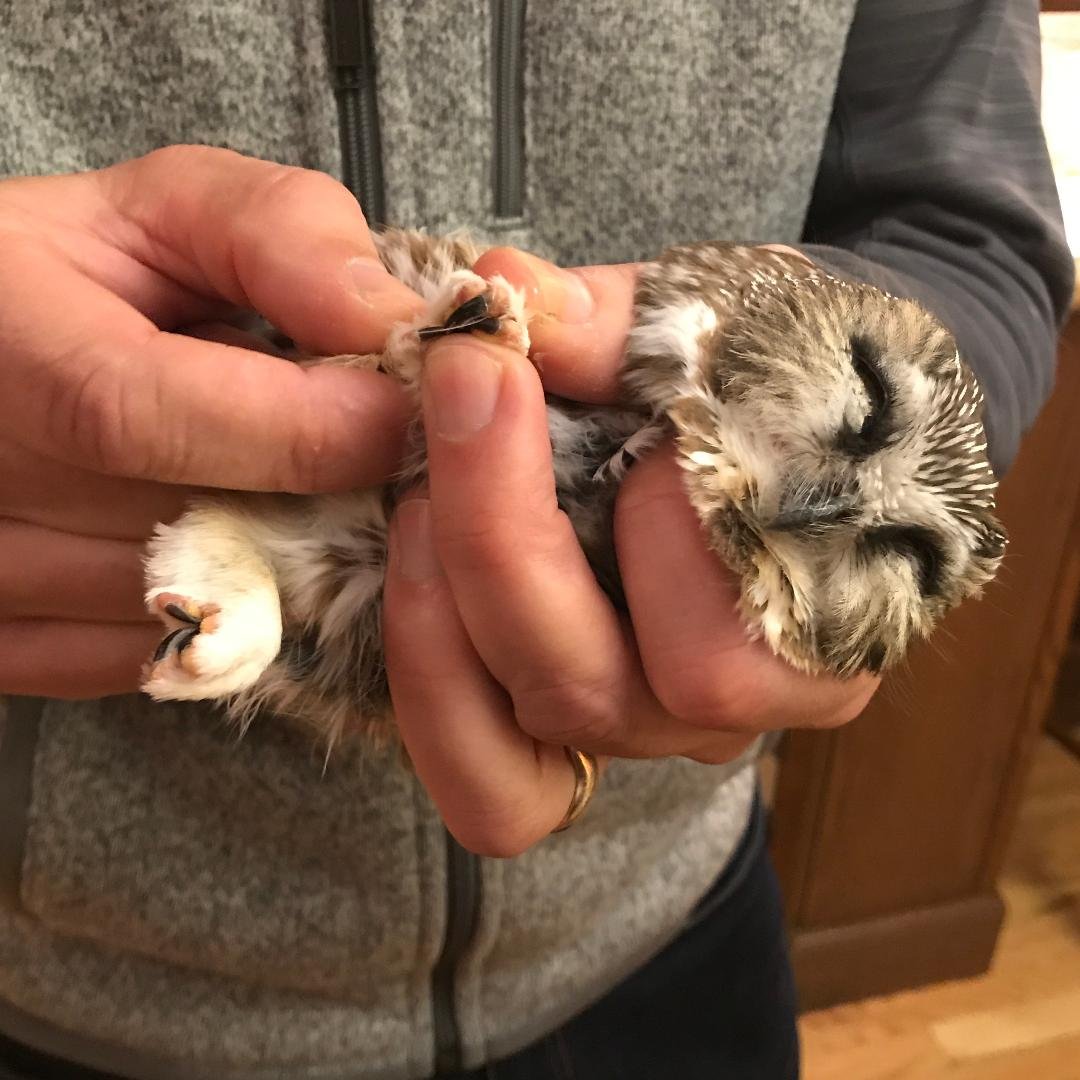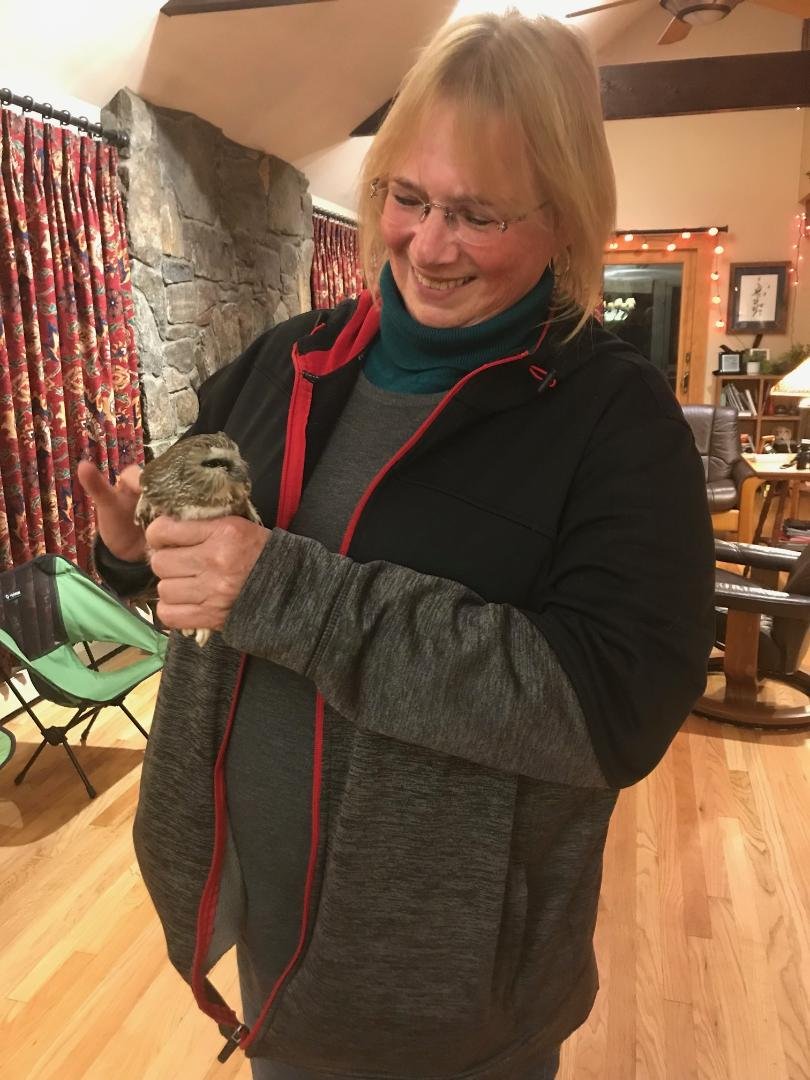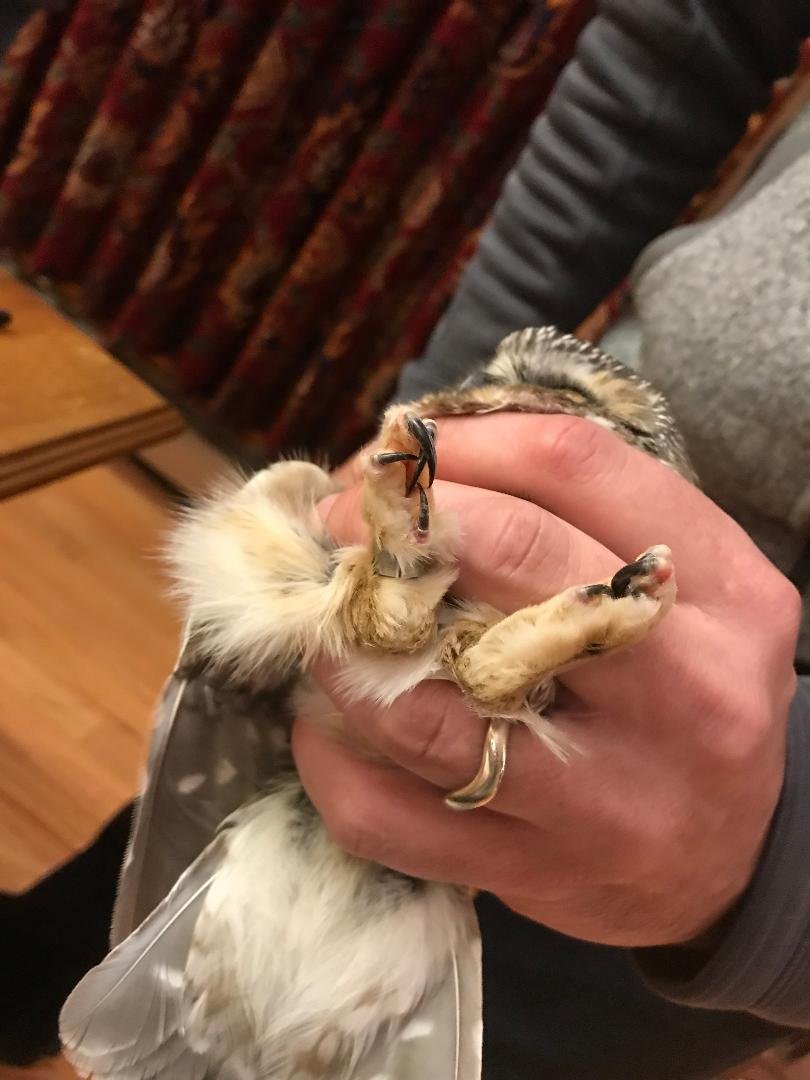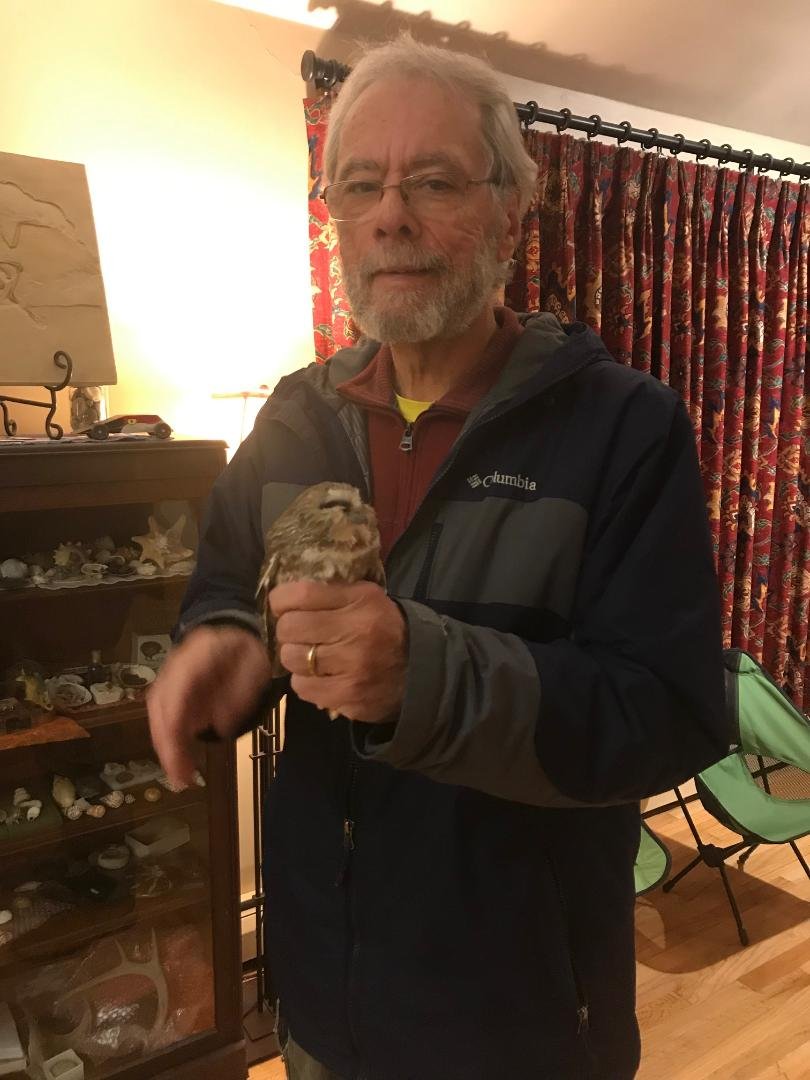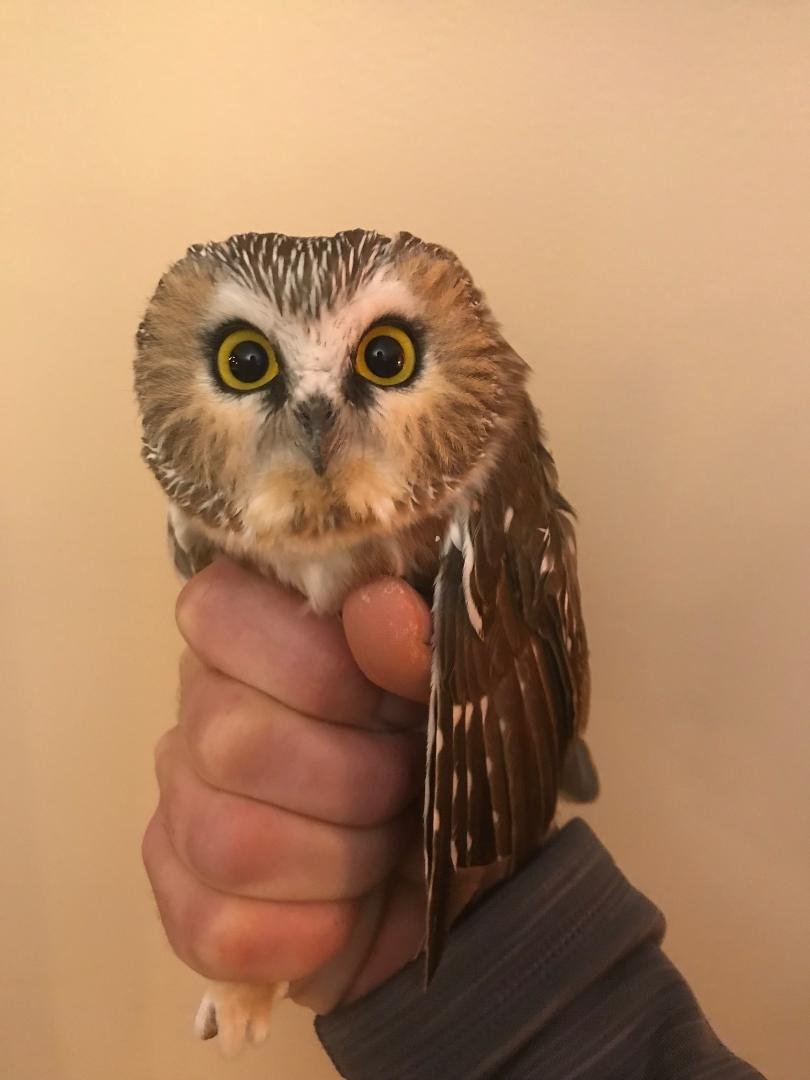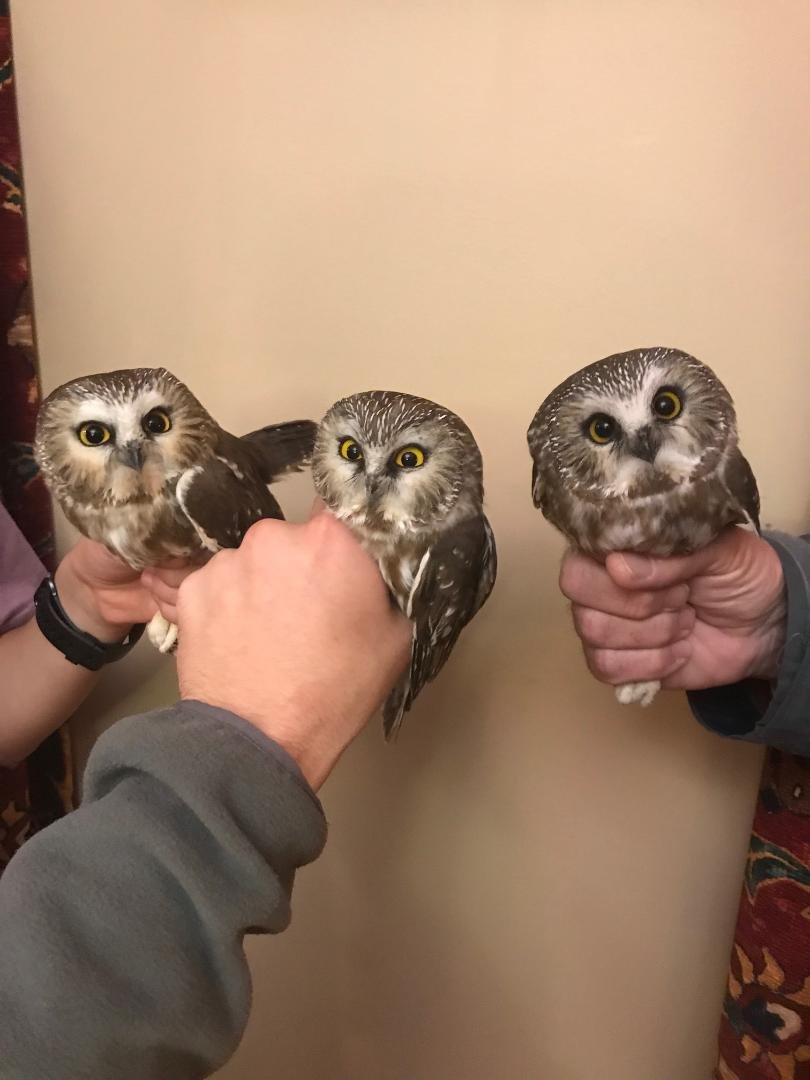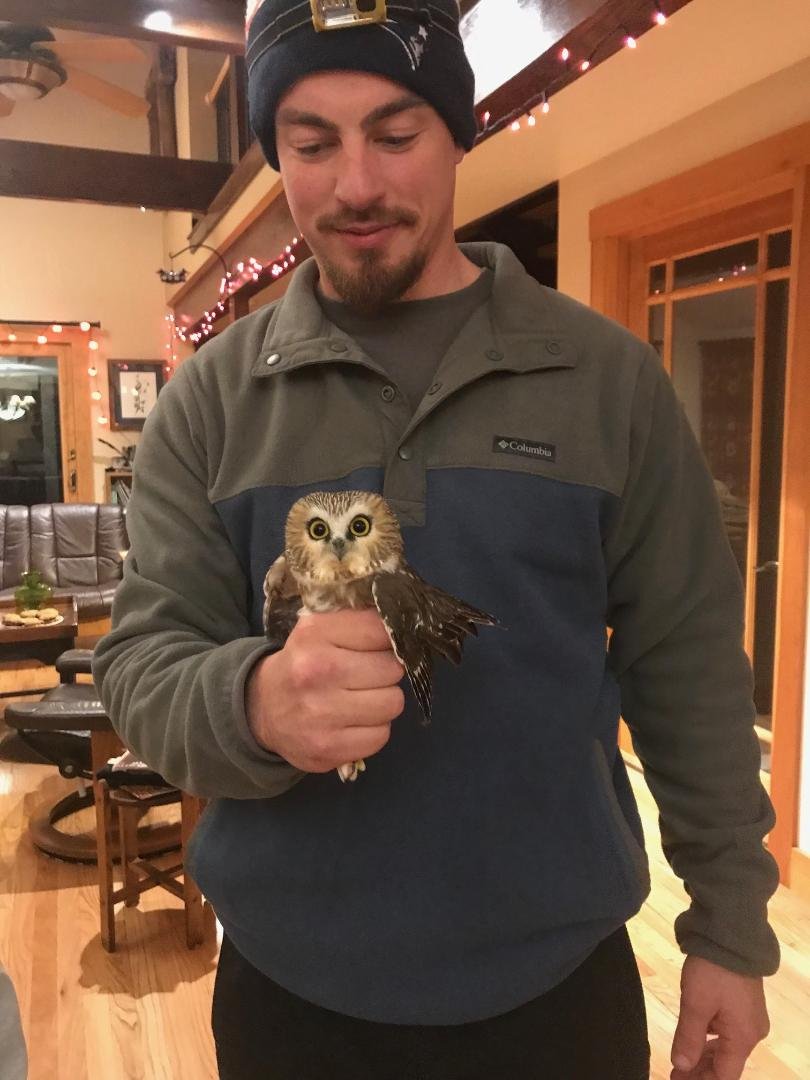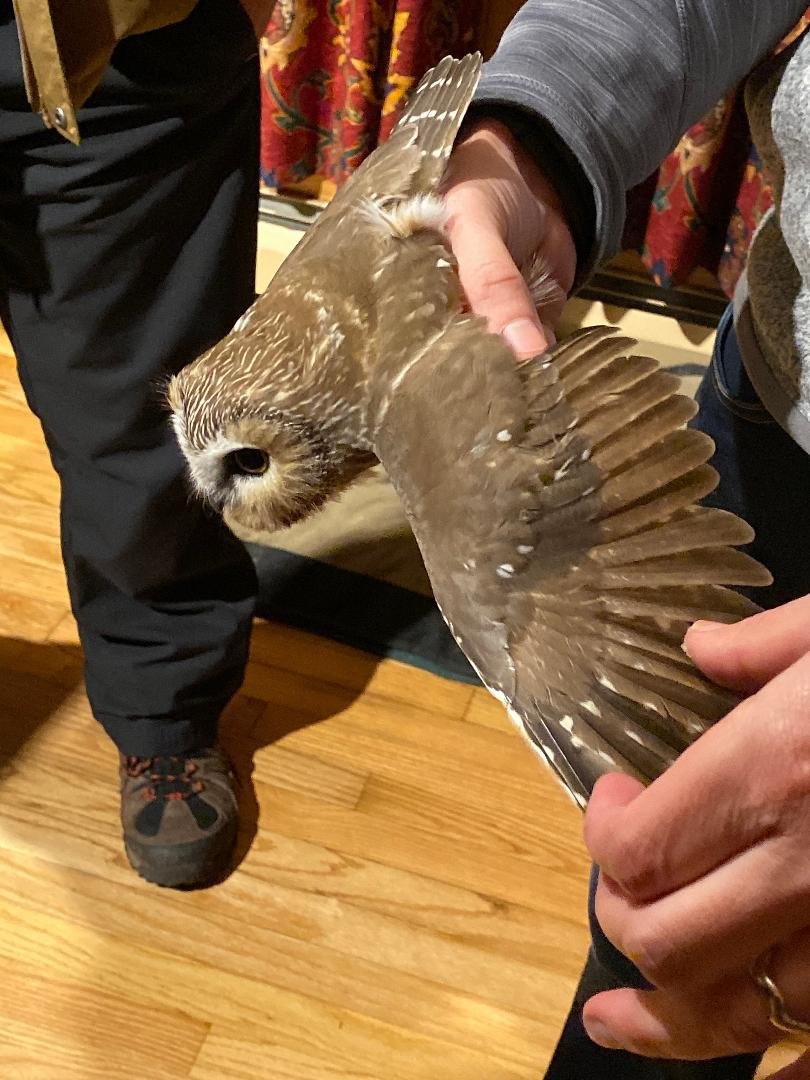| RESULTS from Princeton banding station late October-November 10, 2019 Total owls: 41 (40 not previously banded and one foreign recovery from an unknown location) Hatch-year: 6 Second-year: 26 After-second-year: 9 | Our smallest owl, the Northern Saw-whet Owl, is a striking bird with its brown and white plumage and yellow irises. This species nests in low densities in western Massachusetts but migrate through Massachusetts in relatively high numbers during late fall. Despite being one of the most common species of owls in our northern forests, they are seldom seen. Federally -licensed bird bander and state ornithologist Andrew Vitz (MassWildlife) hosted Club members at a banding station in Princeton on November 2nd, and he managed to capture and band several owls that were passing through the area. Once captured, the birds were banded, and data was collected on their age, sex, and condition before they were released. The data gathered will be submitted to the U.S. geological Survey Bird Banding Laboratory, an integrated scientific program supporting research and conservation of North American birds. Information gathered during banding helps researchers to learn about the owls’ movements and survival rates. Drew writes: "Although it was the best year that I have had [banding owls in central MA], it was a poor year for most owl banders in the northeast. I am not really sure why we had such good luck, but, similar to other stations, we had very few hatch year (HY) owls [young of this year]. This pattern is indicative of poor nesting success for the owls this year. I expect with a good acorn crop this year that the small mammals will be abundant in 2020, and the owls will respond accordingly. " |
THANK YOU to Ted Purcell and Drew Vitz for the photographs.
